|
Excavations in China have unearthed a stunning new
collection of 2,000 year old terracotta warriors and hundreds of other
artefacts.
Archaeologists unveiled 120 new terracotta warriors yesterday at the Qin
Shihuang Unesco World Heritage site in Shaanxi province.
|
|
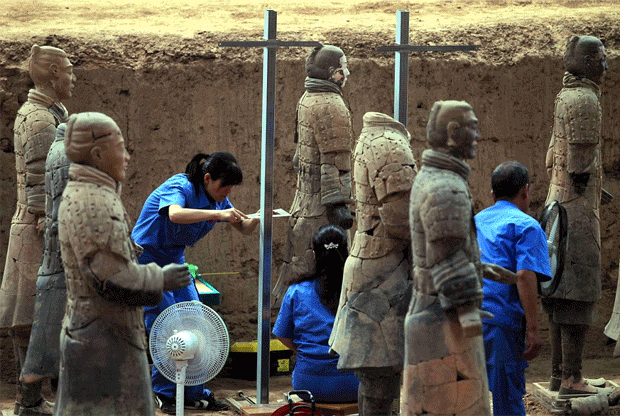 |
|
The current excavation, which started in 2009, is the third at the site
following two previous digs which were carried out in 1974 and 1985.
The artefacts in western China were buried with the first emperor of the
Qin Dynasty in the 3rd century BC.
|
|
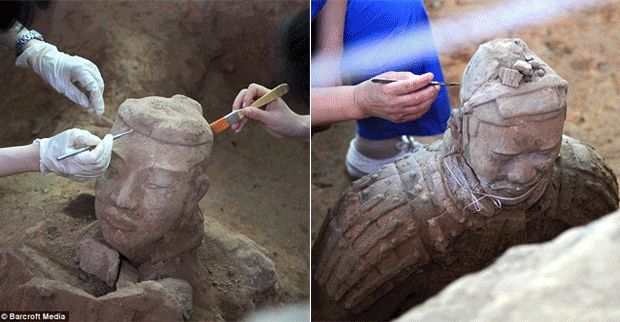
|
|
The latest discoveries include never-before-seen items, including war
drums and a dramatic painted shield. In total, more than 310 small
pieces have been newly excavated as well as 12 clay horses.
The third excavation covers about 200 square metres in pit number one -
the largest and the most visited of the Terracotta Warriors And Horses
Museum.
Some of the other unusual finds in the latest dig include a tool box for
chariots, a crossbow, painted drum and items dyed a unique Chinese
purple colouring.
|
|
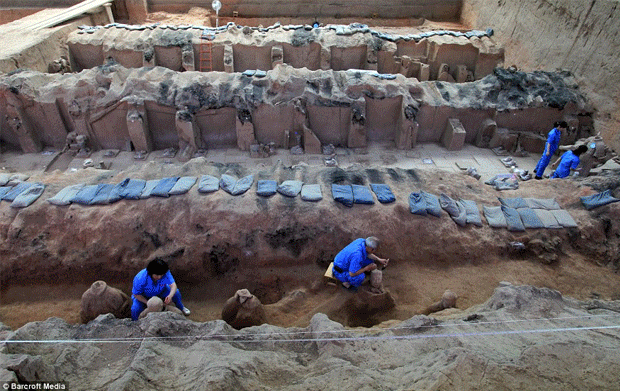
|
|
The dig is expected to be finished within three years.
Once uncovered, the statues are taken to a dedicated museum to have
their colours restored, before joining their fellows soldiers in the
world famous exhibition.
More than 1,000 of the life-size statues, each with unique facial
expressions and hair styles, have already been discovered at the site.
|
|
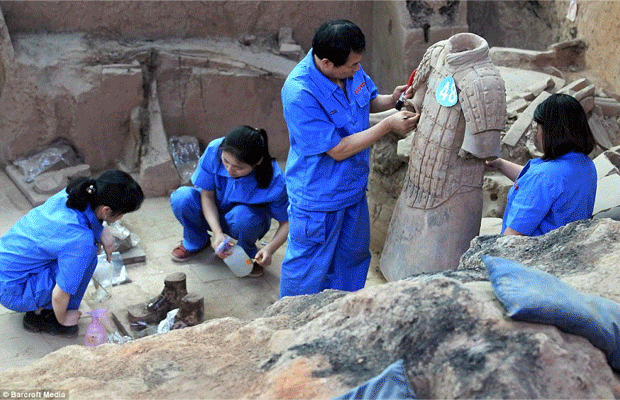 |
|
They were originally put in place to guard the tomb of Qin Shi Huang,
the first Emperor of China.
The fierce figures are among the best-known images of China.
Reproductions in sizes ranging from miniature to full size are sold in
gift shops around the country and an exhibition of 20 figures and dozens
of artefacts from the tomb broke ticket sale records when it travelled
in 2008 to London, California, Houston and Washington.
|
|
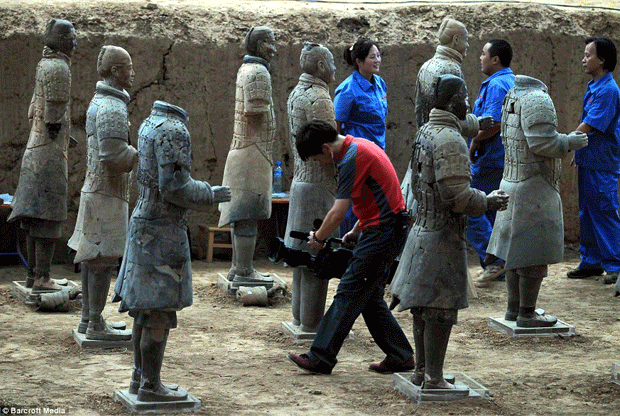 |
|
Cao Wei, director of the mausoleum museum site, said preserving the
figures would be far more challenging than the relatively simple task of
excavating them.
One archaeologist said the museum has been co-operating with a cultural
relic department at a university in Germany for years trying to find a
satisfactory technology to preserve the colour of the terracotta, and
has 'made some headway'.
|
|
|
|
|